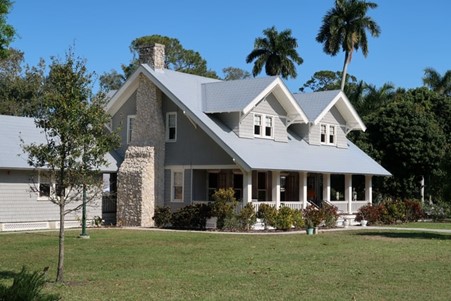Marc Jaffe of Indianapolis is a real estate investor and advisor to people who want to add real estate assets to their investment portfolios. House flipping has become one of the more popular genres of reality TV shows in recent years, inspiring many to try their hand at improving and selling properties, and in the article below, Indianapolis investor Marc Jaffe weighs in on what real estate experts agree is necessary to have a successful venture.
Is a given property going to be a profitable house-flip? Marc Jaffe notes that some eager renovators overlook the basics, and end up spending thousands of dollars on a property that will never sell at its expected value.
Marc Jaffe of Indianapolis says all investments boil down to two things: limiting financial risk and maximizing return potential. This checklist can help house-flippers assess a property and decide whether it’s flip-worthy.
Check the neighborhood selling rate
Successful house flippers don’t hold a property for long periods of time. Once it’s fixed, Marc Jaffe of Indianapolis explains that they sell it as soon as possible, in order to recover investment, and avoid maintenance and mortgage costs.
Look for neighborhoods where there is a high demand for property. Sites like Zillow and Realtor list the number of homes for sale in each city. Read trend reports for each state, and compare against the country average.
Follow the 70% rule
Marc Jaffe reports that a flip-worthy home should give a 30% return on investment. This means that all the costs – buying the house, repairs, and real estate fees – should only cost 70% of what it can be sold for. To get an accurate ballpark figure:
Estimate the kind of renovation that the property will need. Does it need a new fresh coat of paint and new fixtures, or a major overhaul? Ask contractors for an estimate of the cost of materials and labor, and the time it will take to complete the work.
Calculate other expenses: cost of the mortgage, taxes, insurance, utilities, and selling price. This house flipping calculator can help identify expenses and calculate the potential profitability.
Check the floor plan and layout
It is very expensive and time-consuming to tear down walls and add rooms. That’s why it’s better to look for a house that already has a good floor plan: the rooms are the right size, and the layout not only makes sense but takes advantage of the view, ventilation and sunlight.
Marc Jaffe says that this is a sign that a “house has good bones”, and can already appeal to many buyers. Even very minimal renovations can increase its value.
Know the neighborhood
Marc Jaffe explains that people don’t just look at a property, they also look at the community and quality of life they can enjoy. That’s why a house’s “flip score” also depends on the neighborhood. Some of the signs to look out for:
- Safety and security. Aside from the crime rate, look for things like well-lit roads and walkways and security cameras. Gather anecdotes from locals. Sometimes, casual conversations with the people at the supermarket or restaurant can give a better insight than any city report.
- Accessibility. How far is the property from schools, public transportation, supermarkets, and entertainment or work hubs?
- Community involvement. An active neighborhood association or community group will usually implement rules that protect the appearance, cleanliness and safety of the area. Many of them also organize activities that foster friendships and community spirit—which can be a plus for certain types of home buyers.
- Investments and developments. Are there plans to develop the area, such as a new mall or road? These can help increase property values and attract buyers who are looking at the house as a long-term investment.
Understand the needs and fears of potential buyers
Marc Jaffe of Indianapolis explains that it’s easier to know whether a property is a “good buy”, if one understands what house buyers are looking for.
Study the different types of markets – young families, retirees, professionals, or those seeking “a quieter life” away from the hustle and bustle of the city. Look at market surveys and industry reports, and spend time interviewing people like them. “What would you look for in a house? What are you willing to pay for?”
At the same time, understand the market’s pain points. Many buyers are willing to repaint a room if they don’t like the color, but they’ll walk away from a property, if they have to replace an old furnace or roof. These “deal breakers” can help determine what renovations are required, and what can be skipped to lower house flipping costs.
Stay on top of trends
Looking at different houses can develop the eye for a “good house”, and an instinct for what sells, explains Indianapolis investor Marc Jaffe. So, read architectural and interior design magazines. Attend open houses to see other properties for sale. Talk to contractors in the area about which materials or styles are most popular in that community.
Stick to the plan
House flipping can be quite lucrative, but Marc Jaffe explains, like any investment, it needs “due diligence” on the risk and potential value. With this checklist, even someone new to the business can spot a good flip or a flop.








